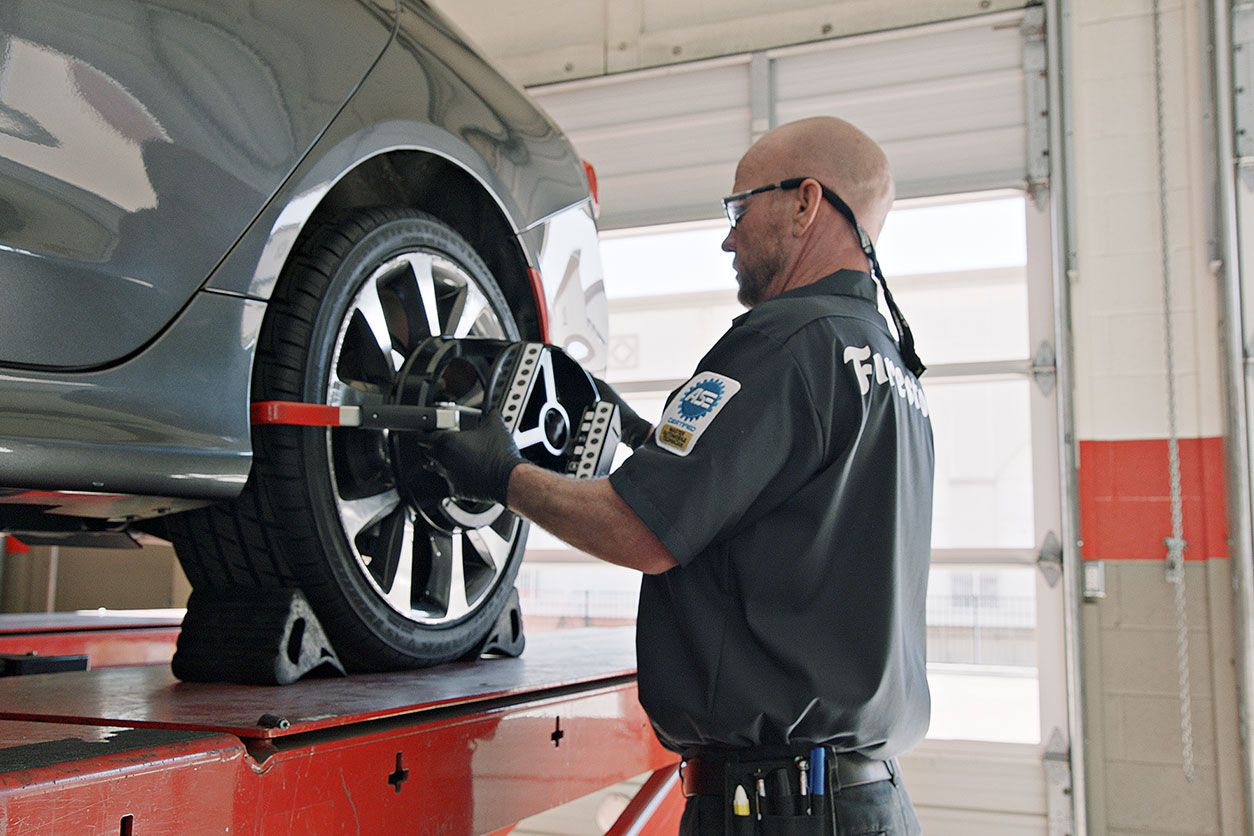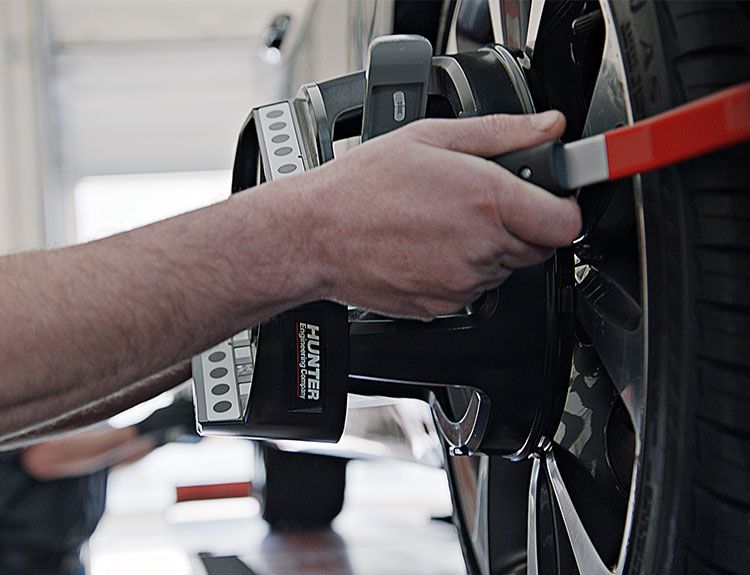
Tire Balance vs. Alignment: Which One Do You Need?
Both tire balancing and alignment support a smoother ride, but they're different services. Learn the difference and signs you might need one over the other.
Read More
Wheel alignment issues are no joke. Your wheel alignment can affect many critical vehicle functions, such as your braking system, steering system, suspension parts, and can have an effect on fuel efficiency and tire wear. If your steering wheel is off center while driving or pulls to one side, you may have an alignment issue. Schedule an appointment, and our expert service professionals can diagnose and repair wheel alignment problems you may be experiencing. If you’re just wondering what wheel alignment is, how often you should get a wheel alignment, or more symptoms of bad wheel alignment to look out for, we’ve got your questions answered below!

Wheel alignment corrects misaligned angles and keeps your car from veering to one side by adjusting your car’s steering and suspension. Over time, road conditions and general wear can cause various suspension parts, such as control arms, ball joints, and wheel bearings, to become loose or damaged. This can cause one or more wheels to track at inconsistent angles rather than straight down the road as intended.
We recommend checking your car’s wheel alignment every 6,000 miles or approximately every six months. Keeping your wheels in proper alignment not only makes for a smoother ride, it can also help preserve fuel economy, help your tires last longer, and prevent costly repairs down the road.
When you bring your car into Firestone Complete Auto Care for a wheel alignment service, we'll check the vehicle's steering and suspension and correct issues with your wheel angles, as well as ensure your tire air pressure is at the manufacturer-recommended level. We offer a variety of services, including standard, lifetime, and safety system alignment services, so you can choose the one that’s right for you. If you want to check your wheel balance, we can help with that, too.
Schedule An Appointment
If your steering wheel is off center or your car is pulling to the left or right on its own, chances are you’re in need of a wheel alignment. Wheel alignment problems are often the result of:
Maybe you’ve hit one too many potholes or accidentally drove onto the curb a few more times than you’d like to admit —if your wheels no longer drive straight, it’s time to consider adjusting the angles back to the manufacturer-recommended settings with a wheel alignment service.
Here are some of the most common symptoms of bad wheel alignment:
It's not safe or good for your car’s health to drive around with a shifted steering wheel or a car that pulls to one side. Misaligned wheels and suspension can lead to faster tire wear, poor fuel economy, and overall decreased vehicle performance. That’s why it’s always best to save time and money by dealing with a wheel alignment problem at the first sign of trouble. Visit your local Firestone Complete Auto Care store today, and our tire and automotive professionals will have your car driving smoother and handling better in no time.

Both tire balancing and alignment support a smoother ride, but they're different services. Learn the difference and signs you might need one over the other.

Discover the top causes for a misaligned steering wheel and the possible solutions. Learn how suspension and tires may be to blame and how to fix them.

Does your car need a wheel alignment? Learn what a wheel alignment is and how to tell it’s time for a wheel alignment service from Firestone Complete Auto Care.